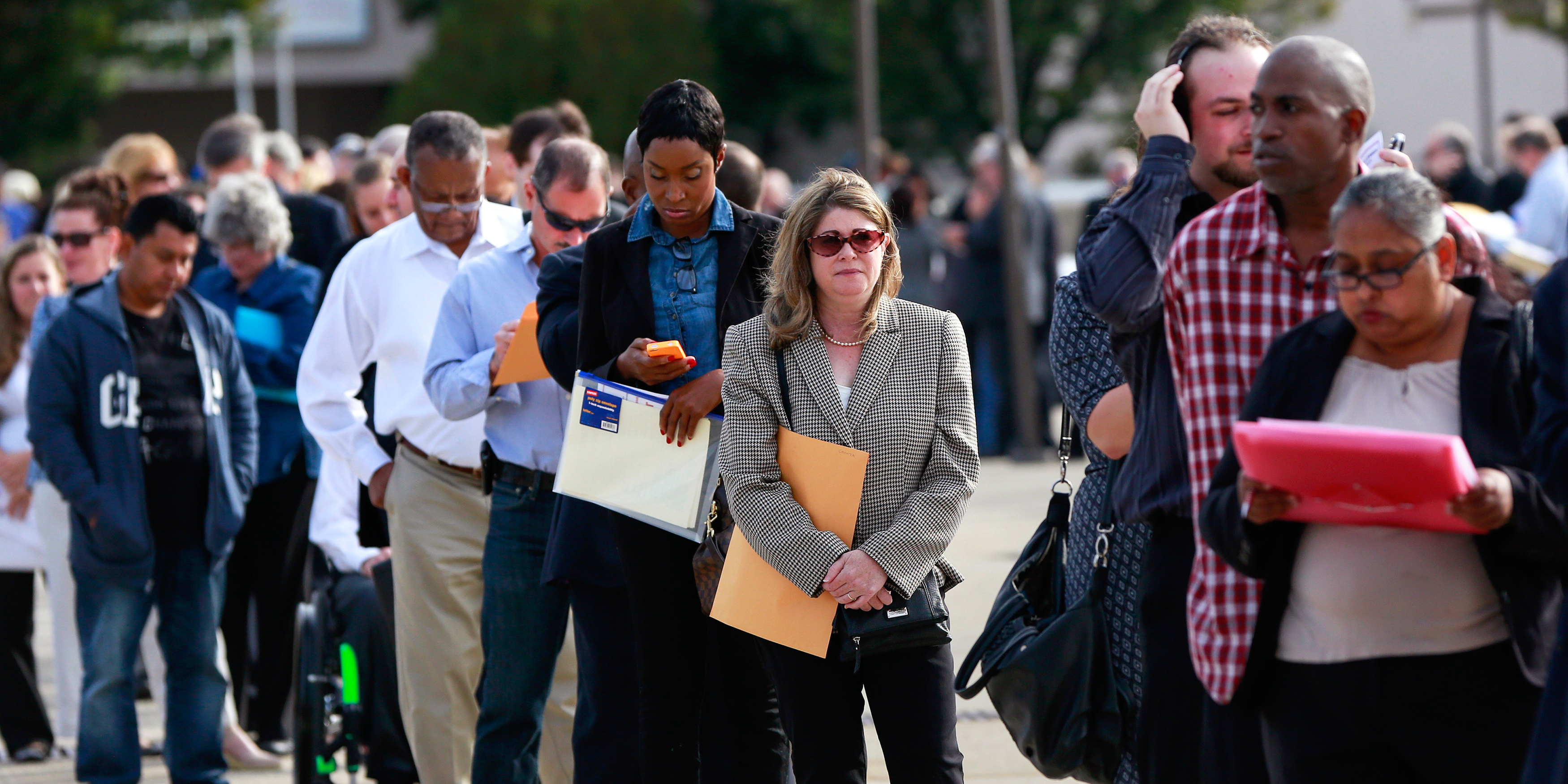
- The US Bureau of Labor Statistics on Friday said the US added 1.37 million jobs in August. That slightly exceeded the 1.35 million payroll additions expected by economists surveyed by Bloomberg.
- It marks the fourth straight month of job additions as the economy tries to claw back from a coronavirus-induced recession. The US saw historic job losses in April.
- The BLS also said the US unemployment rate was 8.4% in August, down from 10.2% in July.
- Visit Business Insider’s homepage for more stories.
The US economy has recorded a fourth straight month of job gains as the labor market tries to recover from a historically sharp downturn.
American businesses added 1.37 million nonfarm payrolls in August, according to the Bureau of Labor Statistics. That slightly exceeded the 1.35 million payroll additions expected by economists surveyed by Bloomberg.
The US unemployment rate came in at 8.4%, the BLS said, far lower than the 9.8% expected by economists. April’s 14.7% reading was the highest since the Great Depression of the 1930s.
The report provides the latest snapshot of the labor-market recovery following the pandemic-induced recession.
“These jobs numbers reflect a big win for American workers, and are a welcome surprise considering the unemployment insurance claims have barely been budging in recent weeks,” said Robert Frick, a corporate economist at Navy Federal Credit Union. “Unemployment breaking the 10% barrier so decisively is a big psychological lift as well.”
Inside the numbers
The Bureau of Labor Statistics noted that the headline employment number in August was boosted by temporary workers for the US Census, which hired 238,000 temporary workers during the reference week for the nonfarm-payrolls report.
The August report also included supplemental data added to gauge the impact of the coronavirus pandemic on employment. The share of workers who telecommuted during the month declined to 24.3% from 26.4% in July.
In addition, 24.2 million people in August said they were unable to work in the past four weeks because their employer "closed or lost business due to the pandemic," down from 31.3 million in July, according to the report. Of these people, 11.6% said they received at least some pay from their employers.
The number of people who said the coronavirus pandemic prevented them from seeking employment also ticked down during August to 5.2 million, from 6.5 million in July.
While the report showed that the labor-market recovery pushed forward in August, it also showed signs of underlying weakness in the economy. During the month, the amount of permanent job losers rose by 534,000 to 3.4 million.
Economists worry that people who permanently lose their jobs will have a harder time finding employment again, delaying the recovery. The number of permanent job losers has increased by 2.1 million since February.
"There is a very long way to go indeed, and rising evidence that the damage being done is becoming more durable rather than temporary," Eric Winograd, the senior AB economist, said in a note. "The longer that people are out of work the more difficult it is likely to be for them to re-enter the workforce."
At the same time, the number of workers on temporary layoff decreased by 3.1 million in August to 6.2 million. While still elevated, the number is much below the record high seen in April, the worst month of job losses during the pandemic.
Some of the sectors hit hardest by the pandemic gained jobs back in August, including retail trade, professional and business services, leisure and hospitality, and education and health services. Still, total nonfarm employment is 11.5 million, or 7.6%, below the pre-pandemic level in February.
Looking for government signals
Americans have been waiting for further signs the government will provide new stimulus to aid struggling businesses as well as workers who have been laid off because of the virus. So far, Democrats and Republicans remain deadlocked in negotiations.
Particularly contentious has been the additional $600 weekly unemployment benefit, which expired in July, slashing income for millions of Americans.
In August, President Donald Trump signed an executive order extending an extra $300 a week in federal benefits with the option for states to provide an additional $100. While the program has been approved in 40 states, it may last only a few weeks.
Also in August, the Small Business Association's Payroll Protection Program ended. The lending program gave fully forgivable loans to small businesses that used them to keep workers on the payroll.
The trajectory of the economic recovery is becoming increasingly important as the 2020 presidential election draws near. Trump, who often touted the strong economy before the pandemic, is lagging behind his Democratic rival Joe Biden in polls.


